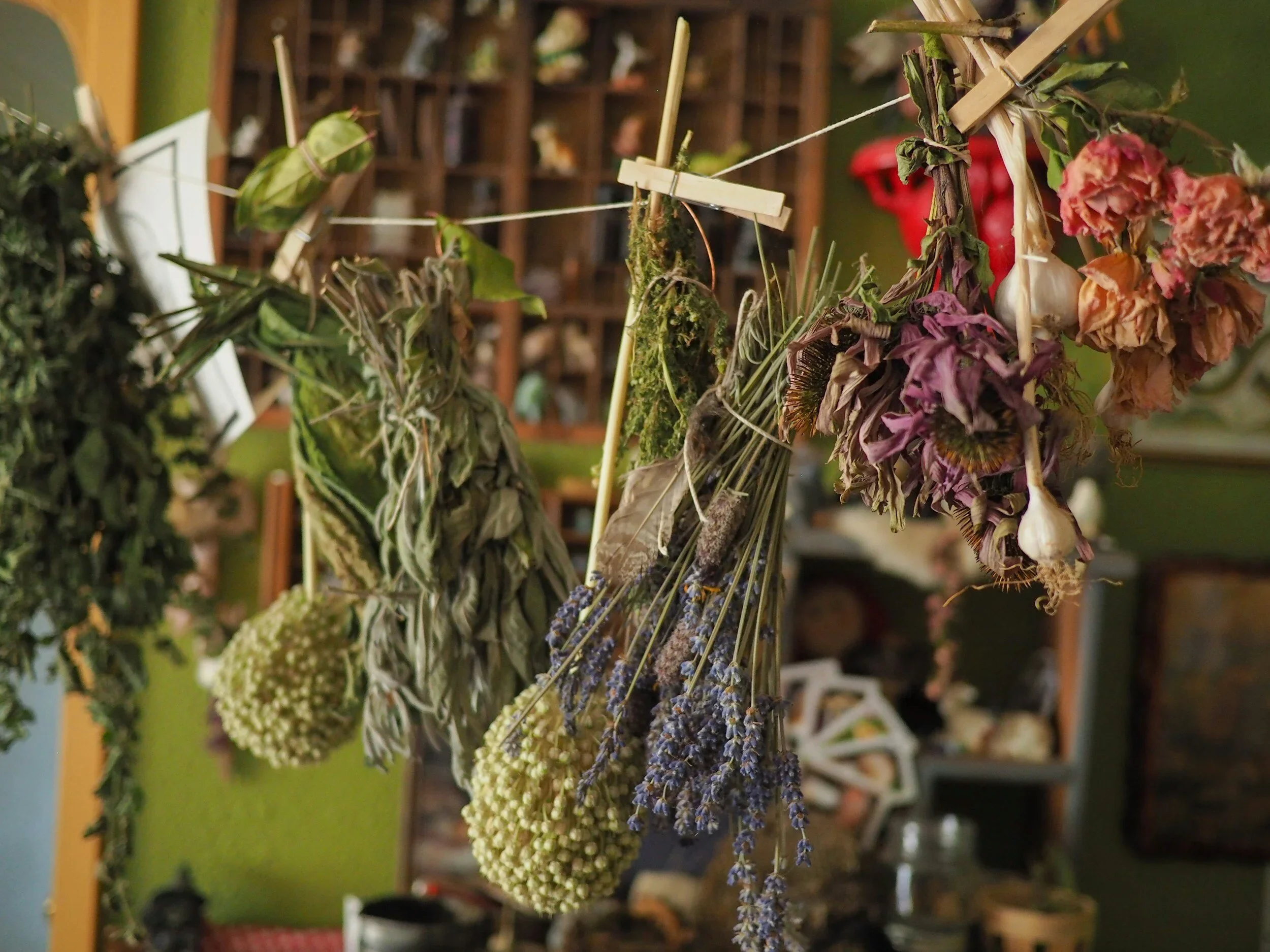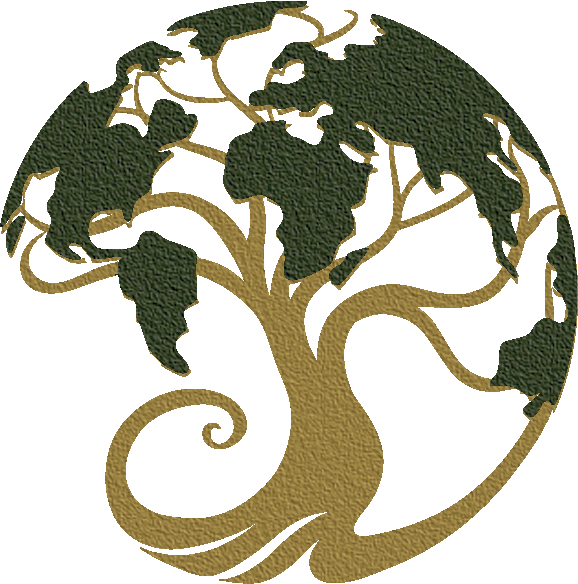
Practical Herbalism:
Correspondence Course
Practical Herbalism
Step into the wisdom of the green world. Practical Herbalism is a comprehensive self-study program rooted in ancient plant traditions and modern herbal practice. This immersive course empowers you with practical skills, experiential learning, and a living connection with the spirit of the plants. It offers guidance that supports balance, vitality, and well-being for yourself, your loved ones, and your community.
Course Overview
Practical Herbalism is an invitation into the heart of the plant world. This correspondence course provides both the fundamental skills needed to practice herbalism and a deeper connection with the spirit and essence of the plants. It is designed as a thorough, hands-on learning experience that brings herbal wisdom into daily life.
Developed by Rosemary Gladstar, one of North America’s most respected herbalists and founder of the California School of Herbal Studies, the course blends earth awareness, scientific observation, traditional plant wisdom, and folklore techniques. With mentorship from Shantree, you will receive personal feedback on assignments, ensuring your studies remain practical and applicable.
What You’ll Experience
▸ Foundational skills in identifying, preparing, and working with medicinal and edible plants
▸ Experiential practices that connect you with the essence and vitality of herbs
▸ Guidance in creating herbal remedies and applying them with confidence
▸ A deepening relationship with plants as teachers, allies, and sources of balance
▸ Personal mentorship and feedback to support your learning journey
A Path of Transformation
As you engage with the plants, expect both practical knowledge and personal growth. Herbalism is more than the study of remedies; it is a way of living in harmony with nature. Students often find their relationship with plants ripples into greater health, joy, and balance in daily life. The beauty of the green world works gently, awakening a renewed sense of connection with the Earth and with oneself.
Your Journey Awaits
Practical Herbalism invites you to walk a path of discovery with the plants. As you learn their qualities and gifts, you will develop confidence, clarity, and a deeper sense of connection with nature. This journey equips you with knowledge and practices that can enrich your daily life and allow you to share the benefits with those around you.
Projects & Assignments
The Lessons are designed to provide practical, hands-on experience. Each lesson gives:
Directions and recipes on making herbal preparations,
A list of herbs to research,
Projects include making a herbal first aid kit, designing a herb garden, or making your herbarium and plant press. You are encouraged to complete as many of these projects as you can. Each assignment is designed to enrich your personal experience with the plant world
LESSON #1
How to determine good quality herbs.
Where to get herbs/herbal products.
Herbs and allopathic medicine.
Herbal preparation: decoctions/infusions.
Herbs for the nervous system.
Herbal nervine formulas.
General suggestions for a healthy nervous system.
Health problems related to the nervous system.
Materia medica for the nervous system.
Wild plant identification: St. John’s wort
LESSON #2
Beverage blends
How to create beverage blends.
Terminology is used to describe herbs.
Weights and measures charts
Herbal Preparation
Herbal oils
Salves, ointments, and balms
Solvents used in herbal preparations
Herbal first aid: skin problems
General suggestions for skin problems
Skin problems and herbal treatments
Herbal therapeutics: the liver
The medicinal action of alternative
Materia medica
Liver imbalances
Herbal treatments for liver imbalances
Hayfever and allergies
Wild plant identification
LESSON #3
Science versus art
Herbal Preparation
Tinctures
Liniments
Capsules
Herbal Pills
Herbal therapeutics: the respiratory system
General guidelines
Materia medica
When to treat the respiratory system
Favourite formulas for the respiratory system
Programs to follow for respiratory infections
Asthma/Hayfever/Allergies
The fine art of drying, harvesting, and storing herbs
When to harvest
Drying your herbs
Storage
Herb identification
LESSON #4
Herbs for Children
Which herbs are safe for children
Materia medica
How to determine the dosage
How to administer herbs
General formulas
Herbal remedies for children
Recipes for children’s products
Major chemical constituents of herbs
Herbal therapeutics: the urinary system
Herbs for the urinary system
Materia medica for the urinary system
Healthy kidneys
Common imbalances of the urinary system
Basic aromatherapy
Essential medicine
Essential oils
Aromatherapy charts
Herbal Dreams
Dream pillows
Dream tea
Dream balm
Wild plant identification: Dandelion
LESSON #5
Herbal pet care
General suggestions
Materia medica
Common health problems of animals
Herbal preparations: Charmoon’s 6th. chakra sauce
The sciences of herbs
Compresses and poultices
Poultices
Compresses
How to make poultices and compresses
The incredible plantain poultice
Herbal stimulants
How stimulation therapy works
When to use herbal stimulants
When not to use herbal stimulants
Materia medica: herbal stimulants
Examples of formulas
Therapies using herbal stimulants
Stevia and Guarana
Natural cosmetics
5 Steps to Perfect Skin
The recipes
Beauty and the bath
Home healthcare products
Where to get containers and ingredients
Making your herbal first-aid kit
Kitchen medicine
Herbal remedies for radiation
Survival Tactics
Nutritional antidotes
Wild plant identification: chickweed
LESSON #6
General concerns of women
Books on women’s health
Women’s ceremonies and ritual
Herbs for the female reproductive system
General guidelines for a healthy female system
Specific treatments for common health problems
Pregnancy and childbirth
Formulas for pregnancy
Renewing the body after birth
Recommended reading
Menopause and crones
Signs of menopause
General guidelines for menopause
Specific treatments for menopause
Estrogen replacement therapy
Conclusion
LESSON #7
Creating medicinal formulas
Guidelines for creating medicinal blends
Examples of formulation
Exercises for you to do
Herbs for winter health
General guidelines for winter health
Favourite wintertime recipes
Herbal remedies for winter health
Herbal therapeutics for male health care
General guidelines for male health care
Materia medica for the male system
Herbal tonics for the male system
Specific male health problems
Herbs and health care by J. Green
Wild plant identification: Yellow dock
LESSON #8
Herb gardening
The basics of gardening
Recommended reading on herb gardening
Designing the herb garden
The culinary garden
Recipes from the culinary garden
The medicinal garden
The Medicine Wheel Herb garden
How I build my herb garden
Zigzag to success
Garden product directory
Making your herbarium and plant press
Making a plant press
Treatment of scabies and crab infestations
Herbal preparation: vitamin and mineral formulas
Herbal therapeutics: the digestive system
Materia medica for the digestive system
Imbalances of the digestive system and herbal treatments
LESSON #9
Preventative health care
Clinical mock-up cases
Prescription for health and happiness
Pathways to health and healing by F. Davidson
Purification and regeneration
Transition: Ringing the changes
Purification diet
Acid/alkaline foods
Sources of nutrition in herbs and food
Good health and your skin
Legal herbalism
Legal Herbalism by K. Collins
How to handle an FDA or state inspection
Legal aspects of herbal prescribing
The question of “safe” and “unsafe” herbs
The toxicity hype by M. Blumenthal
“Herbs are often more toxic than magical.”
Food for thought
LESSON # 10
Wild plant identification
Eight steps to learning plant identification
Wild food cooking
Recipes
Flower essences
Flower essence preparation and usage
Dosages/How to administer
Rescue Remedy
Bach flower essences
Where to obtain flower essences
The immune system
Autoimmunity
The immune system and ageing
Herbs for the immune system
Building a healthy immune system
Materia medica for the immune system
Resources for continuing your herbal studies
Final Quiz
PART I (The Correspondence Course) Is the home study part of the course. Study the material and do the lessons at your own pace. Send in the lessons through postal mail or email. We’ll check your lessons, make comments, and give you feedback on your progress.
Part II (The Advanced Study & Research) Thesis Project allows you to dive deeper into the teachings. Choose an area of study that you feel particularly drawn to in the course that sparks your passion, invites your curiosity, and beckons you to explore. Write a 5,000-word thesis and conduct a research project to be submitted within the course study time. Also, we ask you to offer to your community and document a couple of workshops or lectures to build understanding, expertise and confidence.
One-on-One Sessions
These sessions are available to both support and deepen the learning experience of this course. Three sessions of 40 minutes each – these are done over the phone or through Zoom. These are available to guide and advise you on your research thesis project. You must book these sessions in advance once you have submitted your proposed thesis topic.
Your Guide & Adviser: Shantree Kacera
Herbs and Supplies
This course is designed to give lots of ‘hands-on learning experience and, therefore, requires some supplies and materials to complete the numerous herbal projects. Many of the items needed are found in your kitchen; other specialty items may need to be ordered.
The materials needed depend significantly on how each student wishes to participate in herbal studies. In each lesson, there is a list of ingredients that you may need to complete your assignment. The bolded items are necessary for the required projects—It is highly recommended that you quickly scan each lesson and mark all the formulas and recipes you wish to make. After you have made your ingredient list, get your ingredients together before you proceed into the lesson. You may need to order some of these items beforehand. The good idea is to collect the necessary ingredients for several assignments. That way, you will be organized and get more out of the lesson when ready to begin.
Homework
Homework is sent upon completion of each lesson and then returned to you. You DO NOT need to send your reference files. You should, however, keep us posted on how you’re doing with your projects, i.e., how your reference file is progressing, reports on your herbal preparations, and the progress of your plant press and herbarium.
Time Completion
You may complete these lessons on your schedule. But to utilize them to their fullest, we recommend you set up a scheduled time to do each task; one evening a week or an afternoon on the weekends will keep your momentum going. The average time to complete the course is about one year. Some students have completed the material in 6 months, while others may take a few years. We do ask that you complete the course in two years. After two years, if the student fails to complete the course within the allotted period, the time-extension fee is $100 for each additional year.
Questions
One of the specialties of these lessons is the personal attention given to your questions and homework. We invite your comments, favourite herbal recipes, and suggestions.
Certificate
Each student who completes the lessons and ALL the homework will receive a beautiful Herbal Certificate. The Certificate awarded states and acknowledges you for conducting a thorough, in-depth study of herbalism. This course’s reputation is outstanding and recognized as superior among other professional herbalists, herbal schools, and holistic centers.
Lessons 1-10 & Beautifully Designed Course Binder
The Practical Herbalism Correspondence Course comes in a specially designed binder. The binder makes keeping your lessons, homework, and other course material easy. The binder and books will be shipped as soon as we receive your tuition.
Textbooks for the Course
Conscious Living Manual, Shantree & Lorenna Kacera
Family Herbal: Herbal Recipes for Vibrant Health
Planting Our Future-Rosemary Gladstar
The Herbal Medicine~Makers Handbook: A Home Manual
For hands-on training, see our Practical Herbalism Mentorship Program details; click here>
For information about the Visionary Herbalism Educator Course, click here
Begin Your Journey
Cost: $1500
Payment plans are available at check-out.
Includes:
All Correspondence Course Material
One-on-One Sessions
Taxes where applicable
Shipping is $50 for North America
Shipping is $100 for International





